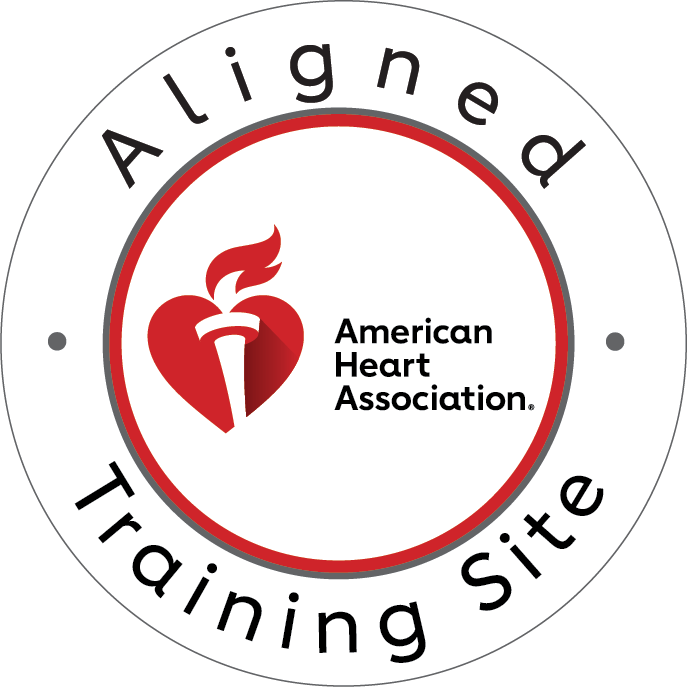History of CPR Training
Introduction
One of the first steps in learning CPR is learning about CPR training , which has evolved a great deal since it became part of American Heart Association's Chain of Survival in 1960. In fact, currently, only about one out of every 10 people who suffer cardiac arrest outside the hospital survive to be discharged from a hospital. But, if CPR is performed during the first few minutes of cardiac arrest, it can double or triple a person's chance of survival.
Currently, only about 1 in 10 people who have cardiac arrest outside the hospital survive. But cardiopulmonary resuscitation (CPR) can help improve those odds considerably. If CPR is performed in the first few minutes of cardiac arrest, it can double or triple a person's chance of survival.
Dr. Friedrich Maass was the first person to develop a method for artificial resuscitation in the 1860s.
In the 1860s, Dr. Friedrich Maass was a German doctor who developed a method of artificial resuscitation called the "Maass method," which is still used today.
The first recorded instance of CPR being administered successfully was in 1891, when a boy fell through the ice into a river.
In 1891, a boy fell through the ice into a river. He was rescued by a doctor who happened to see his head break through the surface of the water. The doctor immediately began performing CPR on him and managed to resuscitate him. This method was similar to that used today: mouth-to-mouth resuscitation combined with chest compressions.
The boy survived and was able to walk again after only two months in hospital recuperating from hypothermia and pneumonia due to his ordeal in the icy water
In the 1900s, the American Red Cross began teaching resuscitation techniques (via flagellation method).
In the early 1900s, the American Red Cross began teaching resuscitation techniques (via the flagellation method). This technique involved striking hard blows against the chest of victims of cardiac arrest in order to stimulate their hearts. The flagellation method was used until 1960s and saw little improvement until doctors began to advocate for mouth-to-mouth resuscitation as a more effective alternative.
CPR training gained popularity in the 1950s when the American Heart Association began promoting its use.
In the 1950s, the American Heart Association began promoting its use. The organization started producing and distributing manuals on how to perform CPR in 1957. It was also during this time that their research into new treatments for heart disease led them to develop a positive relationship with the medical community. With their new-found respectability, they began producing more instructional materials and became the largest provider of CPR Training in the United States by 1960.
In the 1960s, it was recommended that mouth-to-mouth respiration be combined with chest compressions during CPR training.
In the 1960s, it was recommended that mouth-to-mouth respiration be combined with chest compressions during CPR training. Oxygen is delivered to the brain and vital organs via your bloodstream. When performing chest compressions, you should push down on the patient's breastbone (ribs) at a rate of 100 to 120 times per minute for an adult or child. For infants, push down on their breastbone at a rate of about 80 times per minute.
In 1966, mouth-to-mouth resuscitation was made part of standard care by emergency medical personnel.
In 1966, mouth-to-mouth resuscitation was made part of standard care by emergency medical personnel. It is a good idea to do mouth-to-mouth resuscitation if you are trained in it, but you should be trained in CPR before trying to use it.
In 1968, CPR was adopted by police and fire departments across America to become part of their first aid training.
In 1968, CPR was adopted by police and fire departments across America to become part of their first aid training. Since then, the use of CPR has spread rapidly throughout the world. Today, it is taught in schools as part of a student's health curriculum. In addition to having learned about how CPR works and how to do it, children also learn when it should be used—and why it's important not to give up on someone who has collapsed from sudden cardiac arrest.
In addition to being taught in school settings, many people have now learned how to perform CPR through the military. In fact, you've probably heard people discuss "CPR classes" or "CPR certification" at one time or another during your life! This certification means that they have undergone training that teaches them what kinds of situations require this type of emergency response technique (such as an asthma attack) so that they can make informed decisions about whether or not it makes sense for them to perform mouth-to-mouth resuscitation on someone who has suffered a heart attack while out running errands around town with friends."
In 1971, Dr. Henry Heimlich developed his well-known technique to clear airways blocked by choking objects or food particles using abdominal thrusts on oneself or someone else who has stopped breathing due to this obstruction (the “Heimlich maneuver”).
The technique was first described in detail in the Journal of Emergency Medicine and gained popularity after it was featured on television shows including "Emergency!", "ER", "Cops", and "Baywatch".
CPR has come a long way since it was first introduced in 1867.
CPR has come a long way since it was first introduced in 1867. It's no longer just chest compressions and mouth-to-mouth. It's now a full-body technique that can be used to save many lives. CPR has evolved over time, as researchers continue to improve its effectiveness and make it more user friendly for all types of people, including children, seniors and those with limited mobility or strength.
You can see how much CPR has evolved over the years, and hopefully this history has taught you a little bit about its development. In summary, it’s important to know how far we’ve come in our understanding of this life-saving skill so that we can continue providing better care for those who need it most.
The American Heart Association’s Basic Life Support Course teaches healthcare professionals and other personnel how to perform CPR and other basic cardiovascular life support skills in a wide variety of in-facility and prehospital settings.
The American Heart Association (AHA) strongly advocates for early use of high-quality, hands-only cardiopulmonary resuscitation (CPR) in cardiac arrest. BLS certification is the first step toward providing high-quality lifesaving assistance to any person that may be in need of immediate care. The AHA BLS course teaches how to recognize cardiac arrest and perform cardiopulmonary resuscitation according to the AHA guidelines for BLS healthcare providers. These guidelines include recognizing CPR emergencies and activating the emergency response system, checking for response from a nonresponsive person, providing effective ventilation by using a barrier device and performing chest compressions, and the use of an automated external defibrillator (AED).
The American Heart Association's Basic Life Support for the Healthcare Provider course teaches the skills needed to perform high-quality CPR for adults, children, and infants. This course is a great first step for anyone who plans to be involved in emergency medical care or who hopes to become an EMT or paramedic. It's also helpful for professional rescuers who haven't learned or practiced CPR in a while. Every year, hundreds of thousands of people around the world learn these lifesaving skills during this course.
The AHA Chain of Survival reflects the steps necessary to save a life after cardiac arrest. The Chain of Survival starts with early recognition of cardiac arrest, followed by immediate activation of emergency medical services (EMS), early CPR and defibrillation, advanced life support, and quality post-resuscitation care. The BLS course is the foundation of this Chain: early recognition and activation are largely reliant on bystanders and first responders recognizing that cardiac arrest has occurred; early CPR and defibrillation are impossible without high-quality CPR from professionals; advanced life support requires highly trained providers with equipment capable of monitoring vital signs; and post-resuscitation care requires highly skilled providers working with sophisticated equipment that can continue monitoring vital signs and provide other interventions.
Willow Grove CPR uses the latest testing and training curriculum for our CPR instruction courses. This gives our students the confidence to do what needs to be done quickly and successfully. You can contact us to sign up for a class here or by calling us at: 484-880-4762




